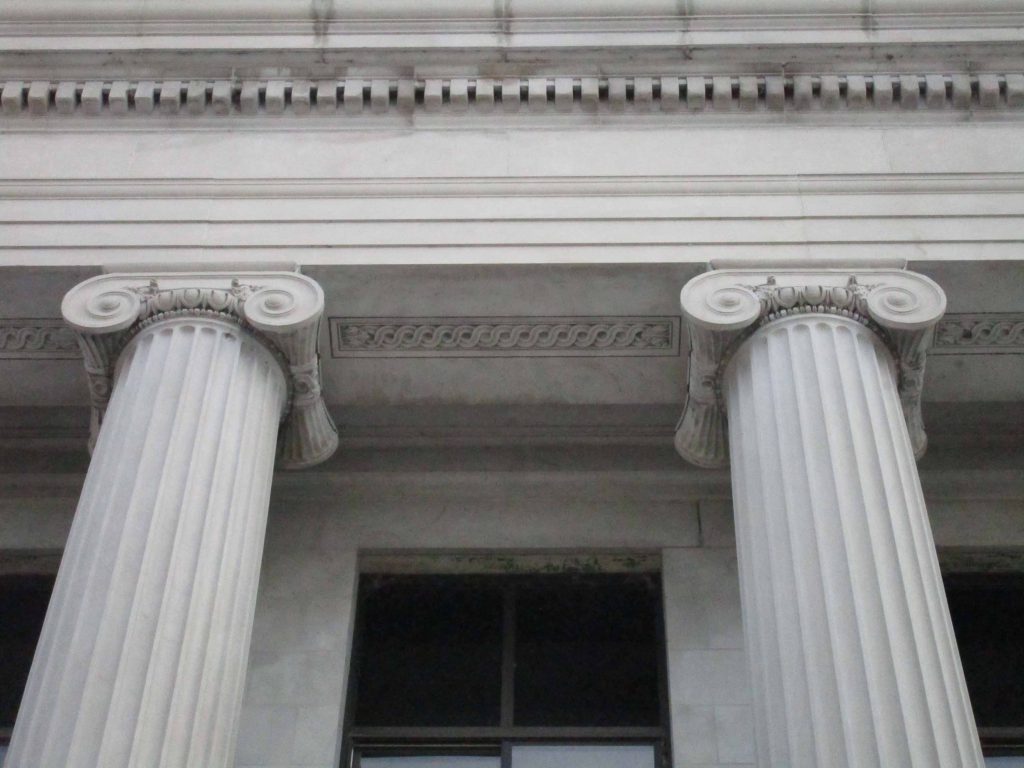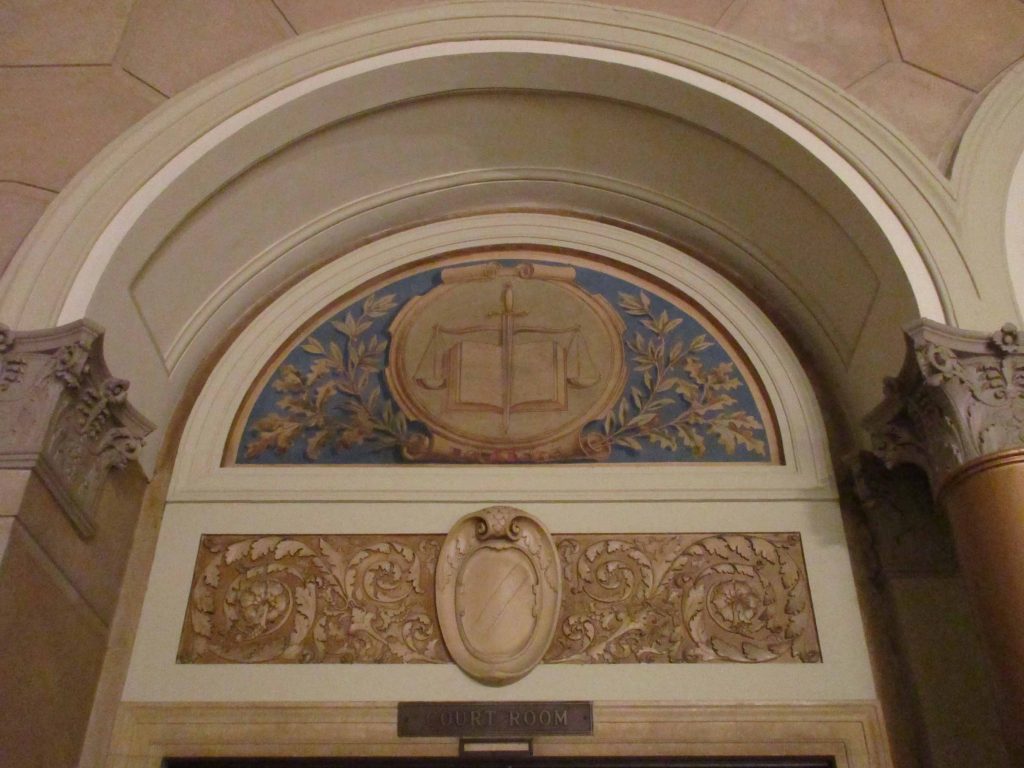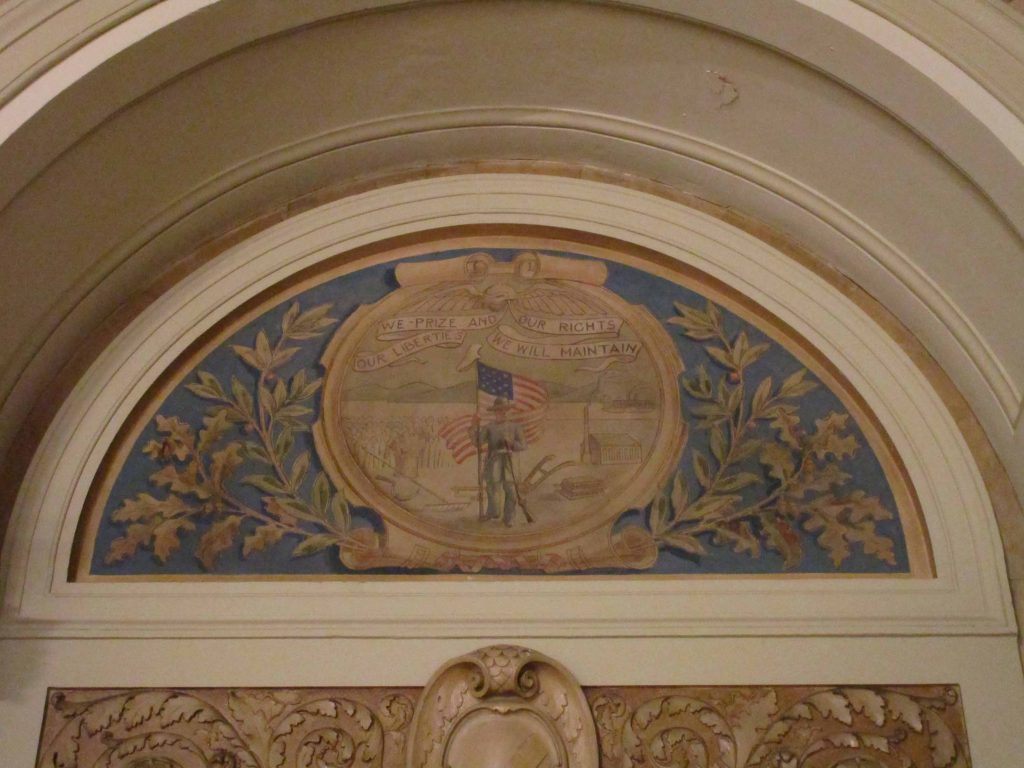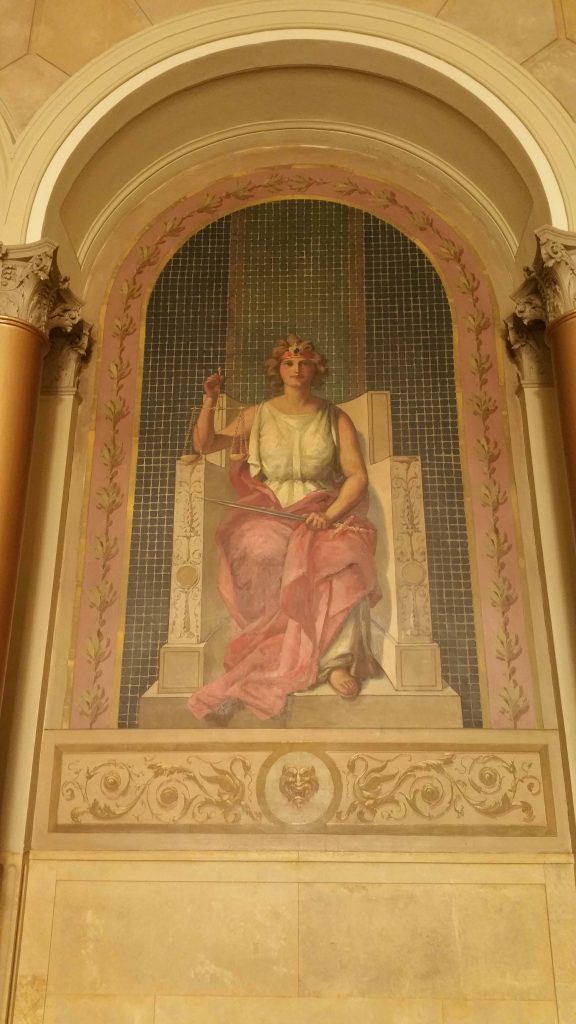
When was the last time you admired the architecture of your county courthouse? Iowa has 99 counties, and each courthouse reflects a specific architectural period. Their designs of yesteryear are a wonderful time capsule. I have the privilege of driving by the Linn County Courthouse in Cedar Rapids every day. This beautiful Beaux Arts building was completed in 1925 and has been virtually unmodified. Plus it holds the honor of being the only courthouse on an island in the United States!
The Magnetism of Beaux Arts
Beaux Arts is a subset of neoclassical architecture, a style that borrows design elements from Greek and Roman temples. Think the Lincoln Memorial or the Supreme Court Building. Beaux Arts was popular from 1880s through the early 1930s. The name means “fine arts” translated from French.

Beaux Arts was a go-to style for public buildings because it has such a monumental feel. Look for these symmetrical, stone facades on libraries, courthouses, city offices, and even banks. You’d be hard pressed to find Beaux Arts on a commercial storefront or a private home though.

Beaux Arts is defined by a number of artistic elements:
- Decorative columns
- Arched windows
- Balustrades (ornamental parapet on a balcony or terrace)
- Pediments
- Carved bas-reliefs
- Rounded convex cartouches
- Medallions
- Arched and pedimented doors

With its limestone exterior and a granite foundation, the Linn County Courthouse is a fine example of Beaux Arts.


“Appropriate classical elements are found in the full entablature and in the protruding, 9-bay entrance porch. The latter features freestanding, fluted Ionic columns which support the entablature and parapet. The two floors of windows are separated by decorative stone panels. Additional detail is found in the stone balustrade around the terrace, and the small balconies on the first floor window flanking the entrance pavilion.” (1).

Another fun element to notice are the mascarons and acroterions. Side note – you have no idea how much I love learning new architecture terms! The mascarons are the lion heads with open mouths and protruding tongues. These figures are in the same family as gargoyles but are purely ornamental.

The acroterions are the feathery embellishments in between the mascarons. These vertical flourishes are normally used on the three corners on a pediment in classical and neoclassical styles, but the Linn County Courthouse doesn’t have this feature. Because it has a flat roofline, the acroterions are included here as a repeating horizontal band.

Lovely horizontal corbel underneath the windows
Island of Historic Buildings
One of the most unique things about the Linn County Courthouse is its location on an island. May’s Island is located in the middle of the Cedar River, which flanks downtown. The courthouse directly faces the Veterans Memorial Building, also done in the Beaux Arts style and completed in 1927. This creates an impressive government plaza. We are only one of three cities in the entire world to locate our government seats on an island – Paris and Osaka are the other two. The courthouse is a contributing structure of the May’s Island Historic District.
 Credit to Christopher Boswell
Credit to Christopher Boswell
“May’s Island Historic District is principally significant as an example of creative urban planning [and] … was developed to create a link, both physical and psychological, between the two parts of the city of Cedar Rapids. On the island are concentrated facilities of local and county government, which are complemented, in style and function … This fortuitous concentration of government activity contributes to a local sense of civic and commercial unity seldom found in cities bisected by rivers.” (1).
An Impressive Interior

One of the ironic things about public buildings is that they can seem unwelcoming or foreboding, especially if you don’t have a specific reason to be there. Most people wouldn’t step foot inside a county courthouse unless they were there for a legal matter. But you don’t need permission to wander inside (though be prepared to walk through a metal detector and say hello to some nice sheriff deputies).

The interior of the Linn County Courthouse is far lovelier than its exterior. I don’t know what I was expecting the first time I wandered in, but I certainly stopped and gapped. I expected the marble floors and travertine walls, but I was stunned by the stained glass, chandeliers, and plasterwork.


A large, open space on the main floor is common in courthouses, with ancillary spaces on the perimeter. The two-story hall is literally a central feature.

But while some buildings become less decorative on the upper stories, the reverse is true here. Because the third floor is where the main courtrooms are, this is still a highly public space. Which explains why has the most elaborate decoration. The sole staircase leads you to a landing with arches and a massive stained glass ceiling and chandelier.




The other three walls have a set of three arches, two of which are stained glass tryptics (a set of three panels) that act as interior windows. The far wall has a central panel with Lady Justice and two doors with murals that lead into the courtrooms.

 The murals absolutely intrigue me, though my research efforts failed to uncover the artist (there’s no signature) or a reason why the murals were included here rather than on the main floor. But the symbolism is pretty easy to suss out though.
The murals absolutely intrigue me, though my research efforts failed to uncover the artist (there’s no signature) or a reason why the murals were included here rather than on the main floor. But the symbolism is pretty easy to suss out though.


The left door mural has a pair of scales balanced by a sword over a blank book. The one on the right has the Iowa state seal, including the state motto “We prize our liberties, our rights we will maintain.” The seal was created one year after statehood in 1847 and has some pretty amazing symbolism.

Lady Justice is a common allegorical figure that personifies virtue in our judicial system. She is holding both the scales of justice and an unsheathed sword. Note that she is not blindfolded in this variation.
 Inside one of the courtrooms.
Inside one of the courtrooms.
Design Symmetry
Hats off to the architects of this building – the design symmetry is outstanding. A careful glance reveals a number of repeating elements (or motifs) between the exterior and interior.
Rosettes


Acroterions


Cartouches


I encourage you to pop into the Linn County Courthouse to see these Beaux Arts features in person! Photos of a building this size and style never do it true justice. It’s absolutely worth 15 minutes of your time.
What county do you live in and when was your courthouse built?
References
- National Register of Historic Places Nomination Form for May’s Island: https://npgallery.nps.gov/NRHP/GetAsset/NRHP/78001240_text



